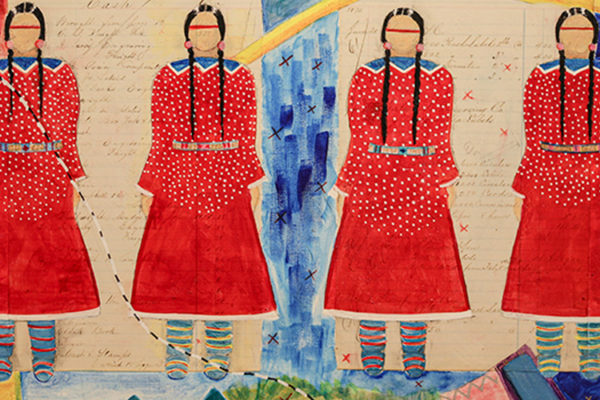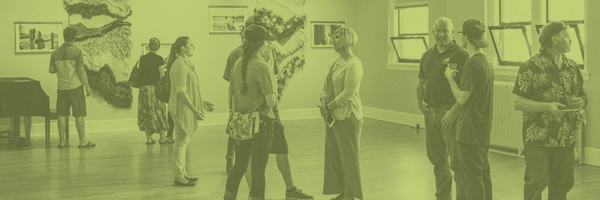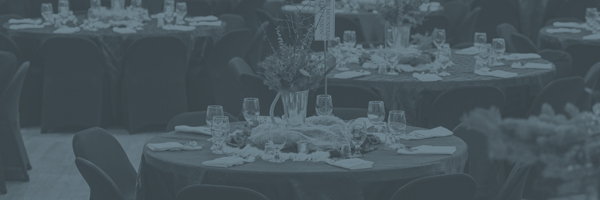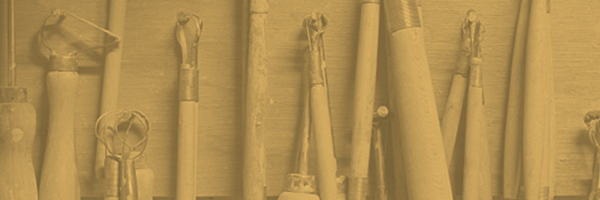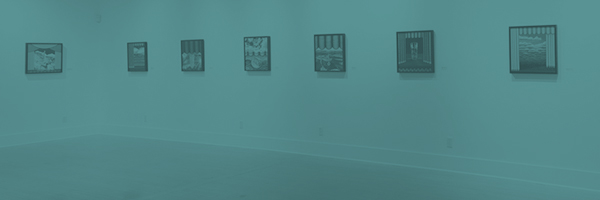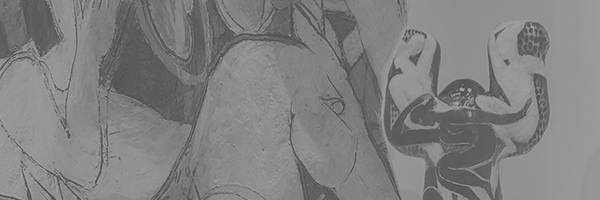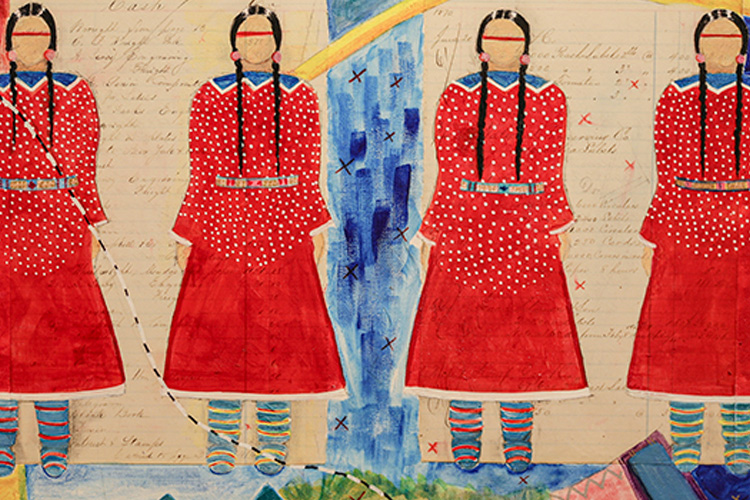
Group Show Featuring Works by Area Artists
We are Still Here and This is Our Story is an impactful exhibit intended to bring awareness to our nation’s Missing and Murdered Indigenous People (MMIP). This crisis is prevalent and widespread in North America yet its significance has been diminished for far too long. Montana currently has the highest rate of missing and murdered Indigenous people in the United States.
Jessie Wilber Galleriey
January 8 – February 28, 2021
About the Work
There are currently 243 people documented as missing or murdered, a figure that is considered low due to underreporting and inadequate data. Of these cases, 86% are unsolved. The fight for recognition and support continues. As a nation have a duty to speak out against these injustices and to the widespread loss of human life.
The Emerson has provided a platform for these women artists to share their stories through contemporary art, beadwork, and fashion design. MMIP has impacted the entire Indigenous community with too many experiencing losses first hand. We invite you to visit these exhibits, learn more about MMIP, and support the efforts to raise awareness in your local community and worldwide.
Thank you to the following sponsors for supporting the exhibit:
Exhibit Events
Social Distance Powwow Red Jingle Dress Special
January 22 – 24
Facebook Group Social Distance Powwow
Artists Talk & Tour
Tuesday, February 2, 6 – 7:30pm
Discussion Panel
Thursday, February 11, 6 – 7:30pm
Exhibiting Artists
DELLA BIG HAIR STUMP is the owner of Designs by Della; A contemporary fashion design company bringing traditional beadwork, patterns, and styles into the modern era. Designs by Della creates both wearable and high-fashions for men and women in the Apsaalooke (Crow) Style. Della has shown her work on the runway nation-wide, and has been featured in several print publications. When Culture Meets Fashion is the culmination of Apsaalooke heritage with fresh Indigenous styling.
The dress entitled “Big Horn County MMIW” is an abstract representation of two ladies. Their faces are on the top bodice with the shiny black sequins representing their long black hair. There is a feather for each women or girl that has been murdered or is missing from my county, Big Horn County. Big Horn County, where the Crow Tribe Reservation is located, currently has the highest rate of MMIW in Montana. This dress is a modernized style of today, with women and girls still being taken and murdered every day.
The design entitled “Sisters of Montana” features a ribbon skirt with all the cities in Montana printed on the fabric. The four satin ribbons represent the four directions (north, south, east and west). The three girls are a symbol of sisters/ sisterhood. The T-shirt was printed with the MMIW image, and the red jacket and face mask also feature MMIP/ MMIW images. With Montana having the highest rate of MMIW cases in the United States, the entire design is intended to modernize traditional styling and keep awareness alive for all MMIW/MMIP!
I want to share awareness for all Missing and Murdered Indigenous Women. Hear their stories and say their names. Give prayer and healing to all families who’s loved one was taken too soon. Prayers for the families who are still waiting for their loved ones to come home. May justice prevail for all Missing and Murdered Indigenous People!
CEDAR BULLTAIL is the owner of Cedar Rose Creations and a member of the Crow Nation. Losing our Kaysera at the turning of new leaves for many Youth, has been slow healing. I have Faith, I have the power of prayer. I have always looked forward to beading my children’s, my sister’s children, and other family graduation caps. Hardin High School and Missoula Hellgate High School both recognized Kaysera with honorary graduation.
Kaysera had said she would be going back to school in Missoula for the 2019-2020 school year, so I always pictured a red graduation cap. It has been bitter sweet memories. My daughter, Aspen Left Hand, and Kaysera are the same age. My Salt and Pepper. I looked forward to our girls’ Senior year celebration and recognizing their accomplishments. Every planning felt half-planned missing Kaysera. One way or another it has come to pass, never thinking it would be beading Kaysera’s as a memorial cap. A cap robbed for many of our MMIP.
For this cap, I collaborated with my daughter Aspen who added her own pieces. Aspen started beading strawberries this past year and there are many beautiful Indigenous stories about strawberries. The pastel tulip represents Kaysera and Aspen as the little girls they once were. The multi-colored tulip uses yellow and blue, Kaysera’s favorite colors according to her Mother, Geralyn. The war bonnet on the center of the head is a personal addition to each cap I have had the honor to bead.
I am thankful for the time I got to piece this together. My life time memories with her and continued prayers. Before receiving this cap in the mail, it traveled all over from Wisconsin to San Juan, Puerto Rico! It took two-weeks to arrive finally on December 28! My daughter and I laughed and she said it was Kaysera. We could picture her traveling along with her cap. It really pushed the time limit for me but when I finally sent it off to Bozeman, I smudged the cap and the box and said “This time, straight to the Emerson Kaysera”, while still picturing her travels.
As a descendant of Goes Well, sister to Chief Plenty Coups, I value these words ever more so: “Education is your greatest weapon. With education you are the white man’s equal, without education you are his victim and so shall remain all of your lives. Study, learn, help one another always”.
GRACE BULLTAIL is originally from Montana, she is a member of the Crow Tribe and a descendant of the Mandan, Hidatsa, and Arikara Tribes of Fort Berthold, North Dakota. Grace is currently an assistant professor in the Nelson Institute for environmental studies at the University of Wisconsin-Madison. Grace makes her own elk tooth dresses and beadwork as well as regalia for her family. Grace completed formal art training during high school, won awards for oil painting and portrait work, and received college credit for Advanced Placement studio art evaluation.
Grace is inspired by the many artists in her family including her father Alex Bulltail and uncles Robbie Dean Plays, and Earl Biss, and bead worker matriarchs Marjorie and Winona Yellowtail. She was particularly inspired by her late grandmother Clara Bulltail’s determination to complete a college degree at the Institute of American Indian Art in Santa Fe, NM while also raising Grace and her siblings. Grace completed a doctoral program in the department of biological & environmental engineering at Cornell University, where she was the first Native American to earn a doctorate in engineering at the University.
Grace’s research interests include water resource management, water policy, tribal sovereignty, and watershed impacts from natural resource development. Grace advocates for justice for MMIW/P families and serves on advisory committees for organizations supporting families and victims. Grace is currently a member of American Indian Science & Engineering Society board of directors and is a professional engineer licensed in the state of California.
WOZEK CHANDLER is a member of the Aaniinen, White Clay People from Fort Belknap, Montana. She is part of the first graduating cohort of the White Clay Immersion School, a tribal college graduate from Aaniiih Nakoda College, and a current senior at Montana State University majoring in American Studies. As an Aaniiih language speaker along with her foundation in Native American Studies and American History, she hopes to become involved in museum work.
Chandler has been beading since she was in the third grade making mostly, but not limited to, jewelry accessories that she sells through her Instagram business page, “Wozek’s Ikeitawn,” translating to Ghost Calf’s Earrings. In 2015 she styled her own mermaid-fit prom dress from red trade cloth along with floral beaded accessories including a belt, bracelet, earrings, and statement necklace. As her beadwork continues to evolve, she hopes to keep trying new avenues of presenting her work.
MONICA GILLES – BRINGS YELLOW is a self-taught Indigenous Artist out of Missoula, Montana/the Flathead Reservation. She started painting, and inadvertently her art career, in the summer of 2019. Currently Monica’s work primarily focuses on Native American people. She paints from historical images in hopes of offering a platform to discuss the resilience, importance, and impact these Native people’s lives have had on present day society.
By working with historical figures, she creates a dialogue regarding Native American people that brings to light their history that is often unknown, concealed, or disregarded by broader American society. At this time Monica’s preferred medium is what she refers to as 3-D collage. She incorporates acrylic paint, resin, markers, historical photos, and gold leaf to achieve the desired layered effect.
When she is not painting she works as a therapist in group homes for children with mental health diagnoses and pre-pandemic she also played roller derby. She currently lives in Missoula, Montana with her husband.
REBEKAH “Carries Sweet Grass Woman” JARVEY is a Chippewa Cree and Blackfeet, self-proclaimed Indigenous Fashionista from Rockyboy, Montana. She is a fourth-generation beader and sewer with a foundation of her traditional tribal heritage and today’s fashion. She combines Indigenous style with modern, urban touches to authentic, hand-made masks and ribbon skirts. She believes it’s her responsibility to make sure the collector is looking stylish with culture. Rebekah’s work in display, “Pimatsoun (Spirital Life) Mask” is made with size 11 cut beads, size 11 neons lined crystal beads, black velvet material, 100 % cotton floral beaded material, brass spots, brass cones, red horse hair, and and hand tan buckskin deer hide.
“The Spiritual Life mask is a paradox concerning representing, Murdered, and Missing Indigenous Woman and Global Pandemic. The colorful tulip flower represents my Cree Culture and features bright neon beads to signify hope. My 15-year-old son is a 5th generation beader, specializing in beaded ropes. The beaded ropes on each side of the mask have hand-tanned buckskin ties to hold the mask in place. The brass spots are reflectors to stir away from any negative energy. The red horse hair represents the power of the Horse Nation is powerful and is used in many ceremonies. The beaded red hand on black velvet material represents my Chippewa Culture. I named the piece “Spiritual Life Mask” because, in the Cree language, the word that stands out most to me is Pimatsioun; this word is used in many ceremony songs.” – Rebekah “Carries Sweet Grass Woman” Jarvey
CARRIE MORAN MCCLEARY is a fashion designer, artist, and Little Shell Chippewa Tribal member who lives on the Crow Reservation in Montana. In 2016, after years of designing clothes and accessories for her family, she founded Plains Soul to share her unique style and artistry with a wider audience. Known for upcycling and Indigenizing everyday items, Moran McCleary learned to bead and sew from her mothers, discovering at a young age how to customize thrift-store finds and hand-me-downs, transforming them into works of art and expressions of her identity.
The Missing and Murdered Indigenous Peoples crisis is a part of our everyday lives. Not all this violence results from our non-Indigenous neighbors. Admittedly, often times, it is what folks call ‘lateral violence’. The truth is, it all results from issues of colonization still affecting Indigenous Peoples as we function every day.
While I beaded this belt and thought about my dress, I learned of two more missing women in our communities. One a young girl, the other a teen. One transgender person was murdered and a mother was killed by her ex-husband. One man was killed the result of police violence. As I beaded, I prayed for justice for all these families. I prayed for peace for them and I prayed their children would be safe. The velvet floral beaded belt and necklace are traditional pieces. We pass down these patterns and beading techniques just as we pass the responsibility to be caretakers of the home and family.
The tipis on the skirt represent our home. Our home is our mother, she takes care of us as we take care of her. It is where we need to hold ourselves and our families accountable for watching over our children and folks at risk. The three tipis represent the three generations of myself and my daughters. My daughters need to know I expect them to be agents of change for the betterment of our communities.
Ojibwa women wore a basic T-strap dress, basically a two-skin tube with straps. Upon contact with traders the same dress was made using trade cloth wool. My T—Strap Revolution is a fitted version of a skirt and top with t-straps. I honor that tradition, but I recognize the MMIP epidemic began when my people were wearing that dress, the day colonists arrived.
The shawl represents the eight Indigenous communities in our state with eight tipis. We share many things. Our families are intertwined, our kids play basketball together, we see each other at the mall and airports and nod in recognition and we stand up for one another in times of need. In 2021 we also share the MMIP crisis.
My shawl represents eight Indigenous communities looking for justice. Justice for missing women, men, children and two-spirit relatives gone but not forgotten. Justice from botched police investigations. Justice for misleading coroners reports and for promises made and never kept. We are grandmothers, fathers, brothers and sisters looking for change, and looking for recognition for a crisis long swept under the rug. We Are Still Here.
SALISHA OLD BULL (Salish/ Crow) is motivated by the Salish history and Indigenous place-based knowledge. She has learned that place gives a sense of self and allows a person to grow intellectually and continue to explore their possibilities in life. Salisha is strongly influenced by cultural preservation and she enjoys combining imagery that reflects cultural values. Salisha was raised by fierce Salish women and she wants to continue to practice her cultural traditions and carry on as much traditional ecological knowledge as possible; to empower the generations that follow ours.
This work is about land with no boundaries and historic forms of art, in the form of pictographs. Hands with natural pigments seem to act as place markers or a sign of Indigenous presence. The combined concepts are meant exude a sense of cultural empowerment and land acknowledgement.
SUSAN “Her Colors Are Good” STEWART is an enrolled member of the Appsaalooke Nation (AKA Crow Tribe), and the Blackfeet Tribe. She is a mixed-media artist working primarily in paint, traditional beadwork, printmaking, and installation. She has exhibited in several solo and group shows since the mid-seventies.
Born in California, she received a BA in Fine Arts from Montana State University. She has worked as an Arts Administrator, Curator, Program Director, and Community Activist. She an extensive history of non-profit support work with organizations such as; Montana Indian Contemporary Arts, Partners of America, Montana Indian Art and Cultural Association, and others. Most recently, she founded Fierce Woman Warrior Society to support and mentor, at-risk Indigenous girls.
As an artist, I see the importance of exhibits like this to create awareness for the issues Native communities face. I have used my own art for many years to create awareness for social change within Native communities. In 2018 I founded a group called Fierce Woman Warrior Society with the premise to support, empower, and mentor women in need. We are dedicated to mentoring the Fierce Women Warriors of the future.
As an elder, I would often be contacted by young women who needed help, often theses young women had “at risk” behavior. When I would council them, I saw there was a need for education and support without compromising them. They needed to be taught to be mindful in today’s society. To be aware of not taking on added risk as young native women.
My recent pieces for this exhibit reflect how I have endured great loss as an elder of my loved ones and the impact of the loss of our young people due to violence. It has brought such pain to our families and our communities. “Kaalaa’s Tears” reflects my feelings of pain and loss I have endured as a Grandmother, Auntie, Sister, and Mother.
My Painting “Star women Sisters We endure” pays homage to my elder my Sister, “Ihkewea” Star Women, who helped me overcome so much in life. She taught me that through my weakness I will find great strength. She made me aware of how I should give back to my family and community and to always be of service. Whether I teach or mentor or just be a good listener to those in need. We will endure, that is our strength. Star women Sisters put forth an image of our women standing proudly in their traditional red elk teeth dress as a symbol of strength and endurance. This shows our unending support for each other. It is an example of our strength by standing steadfast in the face of some of life’s most difficult moments.
The continued lack of awareness for Missing and Murdered Indigenous People is dismissive and insensitive. It occurs right under the nose, and sometimes quite literally in the backyard, of mainstream society, and yet rarely gets any serious attention. The lack of action from police departments, investigators, and our justice system is tragic. It only reinforces the notion that we as Native people are often invisible, even in 2021. We wait and wait and many times there is no closure for our families.
The Missing and Murdered Indigenous People crisis has had a crippling impact on Indigenous peoples in United States as well as Canada. It has been described as a type of genocide. We continue to work to raise awareness for MMIP and MMIWG for all Indigenous People. This includes the First Nations, Inuit, Métis, and Native American communities. Awareness has been driven by organized marches, community meetings, local city council meetings, creating databases, tribal council meetings, domestic violence trainings for police, and State Task Forces. This art exhibit to another way to promote awareness and social change. We can shine a light on a crisis that exists in all communities across Montana.
OLIVIA ROSE WILLIAMSON is the owner of Lady Pompadour Beadwork and Design. She is a member of the Crow Tribe and is of the Whistling Water and Child of the Piegan Clan. She works primarily in a traditional clothing design but adds a contemporary twist to many of her works. Incorporating painted shells, a unique flower pattern of her own design, gold findings, along with intricate beadwork and accessories, set her work apart. Olivia has always been an artistic individual and also enjoys painting, collage work, and jewelry design. Olivia lives for and loves Native art.
The pieces represented in this exhibition were created as an honor and homage to Missing and Murdered Indigenous People. The crisis has affected her family personally with her younger brother, Hub Williamson, missing since April 9, 2019. Hub was a father, a horseman, and rough and tough cowboy. His memory lives on in her vibrant painting of his likeness.

